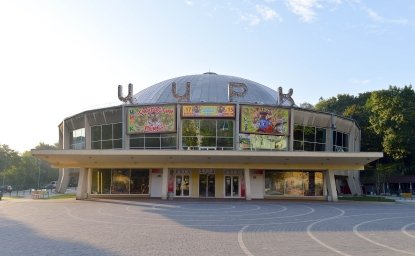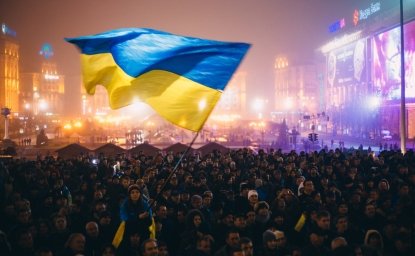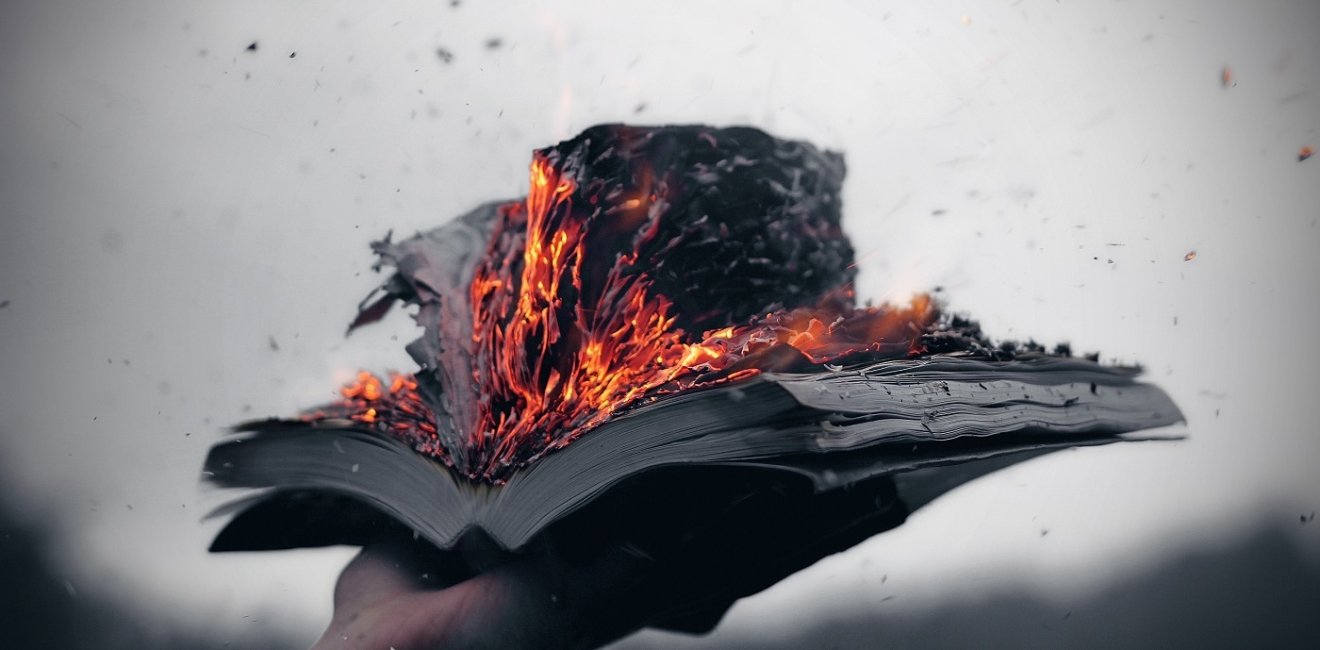
A blog of the Kennan Institute
Growing up in the eastern Ukrainian metropolis of Dnipro, Yulia Dunaeva found herself drawn to the traditional decorative style Petrykivka. Known for its flower patterns, animals, and folk themes, Petrykivka emerged during the late 19th century on walls, housewares, wedding chests, and other domestic objects in eastern Ukraine villages surrounding Dunaeva’s birthplace. The art emerged gradually and then became formalized, especially after its center of gravity moved to the new Soviet republican capital in Kyiv in 1934.
Dunaeva studied Petrykivka before entering Dnipro’s art college. As her formal arts education went on, she began to feel that she had made a mistake in pursuing a folk genre. Nonetheless, she loved folk art and found that it spoke to her emotional and artistic aims. She continued to work in the genre even as she was trained as a graphic artist.
Beyond aesthetics, Dunaeva believes that Ukrainian culture has made it through years of repression through its folk expression. Petrykivka speaks to Ukrainian identity—as it did to her—even as Soviet repressors killed writers, poets, theater directors, and other cultural leaders. Folk culture revealed to her and to millions of compatriots what it meant to be Ukrainian.
Russia’s war on Ukraine began for Dunaeva in 2014, as it did for most eastern Ukrainians. The war heightened her appreciation for the power of Petrykivka to nurture a shared community in war-torn Ukraine. Its power, she realized, rested in its ability to give voice to that which was neither visible nor spoken. Turning to the words of Ukrainian philosopher Grygory Skovoroda, she observed that “everything invisible is stronger than the visible, and the visible depends on the invisible.” Petrykivka became her expression of the invisible shared distinctiveness of Ukrainians.
Since 2014, Duneava has responded to the expanding war through works full of sun, rivers, trees, and gardens expressed through folk themes. Her paintings began to appear in local museums and private collections as they caught the eye of aficionados near and far. At one recent exhibit in Lublin, Poland, entitled The Beast and Its Angel, Dunaeva’s work expresses her belief that life is beautiful and full of magic.
Despite the seeming continuity of her work since the war began, Dunaeva has changed within. Some of her most closely held beliefs about the meaning of life have wavered. She ponders how a small country can exist next to a large, aggressive neighbor. She understands more than ever that her work empowers viewers to affirm their own identities. They make her, and, she hopes, those looking at her works whisper to themselves, “Oh! I feel I am Ukrainian.” To say this out loud is important after so many years of having been forced to suppress this identity.
For two months this autumn, Dunaev’s highly personal style has been on display in her Kyiv show Steppe. These works are rooted in her belief that there should be life and beauty in existence. For her, that beauty can be found in Ukraine’s natural abundance, and in the clouds floating in a summer sky. Thus, for Dunaeva, the process of making her art becomes a necessary protection against aesthetic destruction, and a means for encoding the world for communities with shared values and visual perceptions. These messages become ever more powerful at a time of war.
Most recently, Dunaeva has mounted a new exhibit in a small gallery tucked away in the neighborhood surrounding the Darnytsia Metro Station. That station is only a couple of stops across the river from trendier art districts near St. Sophia’s Cathedral and in Podil. Built during the later Soviet period, the apartment blocks surrounding the station have as little charm and character as any of that era’s buildings, but this out-of-the-way location speaks to the dynamism of a city’s art scene.
Art galleries —and music venues, dance clubs, and theaters—sprang back to life as soon as a modicum of calm returned even though the city remained a target of periodic Russian drone and missile attacks. The artistic community mobilized to resist the Russian effort to erase Ukrainian culture whenever and wherever possible. Well-known clubs and galleries began to open, along with museums and major cultural institutions. Less visible —though perhaps more revealing—small galleries sprang up wherever they could.
Dunaeva’s exhibition is but one instance of how the arts have become a powerful means for inspiring Ukrainians to persevere. It offers an example of a city that is being steeped in art which reaches into the most unlikely of communities and districts. Kyiv has become a city in which art can be found in the unlikeliest of spaces precisely because the arts speak to a shared need to create a world beyond the current war. The resurgence of the arts in wartime Kyiv renders visible that which remains hidden from view. For Dunaeva and many others, the arts proclaim Ukraine’s resilience and continuing existence now, as it has for decades, and even centuries.
The opinions expressed in this article are those solely of the author and do not reflect the views of the Kennan Institute
Author

Former Wilson Center Vice President for Programs (2014-2017); Director of the Comparative Urban Studies Program/Urban Sustainability Laboratory (1992-2017); Director of the Kennan Institute for Advanced Russian Studies (1989-2012) and Director of the Program on Global Sustainability and Resilience (2012-2014)

Kennan Institute
The Kennan Institute is the premier US center for advanced research on Eurasia and the oldest and largest regional program at the Woodrow Wilson International Center for Scholars. The Kennan Institute is committed to improving American understanding of Russia, Ukraine, Central Asia, the South Caucasus, and the surrounding region though research and exchange. Read more

Explore More in Focus Ukraine
Browse Focus Ukraine
A Circus Brings Joy to Lviv’s Children

How Divided Are United Ukrainians?

Building a Thriving Ukrainian Design Community Now

